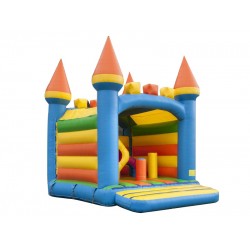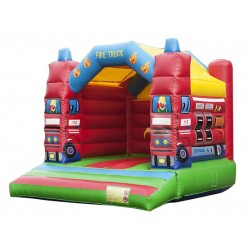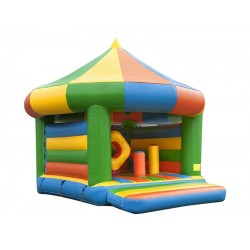The Power Behind the Fun: Electricity Use of Bouncy Castles

Bouncy castles are a staple at children's parties and events, providing endless fun and entertainment. However, many people wonder about the electricity consumption of these inflatable structures. Understanding the power requirements can help you plan for their use more effectively and manage costs. Here, we explore the electricity use of bouncy castles and provide tips for optimizing energy efficiency.
1. Power Requirements
Bouncy castles are powered by electric blowers that continuously pump air into the inflatable structure to keep it inflated. The power requirements of these blowers can vary depending on the size and type of the bouncy castle. On average, a standard bouncy castle blower requires between 1 to 2 horsepower (HP), which translates to approximately 750 to 1500 watts.
2. Duration of Use
The total electricity consumption of a bouncy castle depends on how long the blower runs. For example, if a 1000-watt blower operates for 5 hours, it will consume 5 kilowatt-hours (kWh) of electricity. To calculate the total energy use, multiply the blower's wattage by the number of hours it runs and divide by 1000.
3. Cost of Operation
The cost of running a bouncy castle can be estimated by multiplying the total kilowatt-hours used by your local electricity rate. For instance, if your rate is $0.12 per kWh and the blower uses 5 kWh, the cost would be $0.60 for 5 hours of operation. While this may seem minimal for occasional use, the costs can add up for frequent or long-term use.
4. Energy Efficiency Tips
To optimize the energy efficiency of your bouncy castle, consider the following tips:
- Choose the Right Blower: Use a blower that matches the size of your bouncy castle. Oversized blowers consume more power than necessary.
- Limit Operating Time: Only run the blower when the bouncy castle is in use. Turn it off during breaks or when it's not needed.
- Regular Maintenance: Keep the blower and inflatable clean and free of debris. Proper maintenance ensures efficient operation and reduces energy consumption.
- Use Timers: Consider using a timer to automatically turn off the blower after a set period, preventing unnecessary electricity use.
5. Environmental Considerations
While the electricity consumption of bouncy castles is generally low, it's essential to consider the environmental impact. Using energy-efficient blowers and minimizing operating time can reduce your carbon footprint. Additionally, exploring renewable energy options, such as solar panels, can further mitigate environmental impact.
Bouncy castles provide fun and entertainment with relatively low electricity consumption. By understanding the power requirements and implementing energy-efficient practices, you can enjoy the benefits of bouncy castles while managing costs and reducing environmental impact. Always prioritize safety and follow the manufacturer's guidelines for the best experience.



